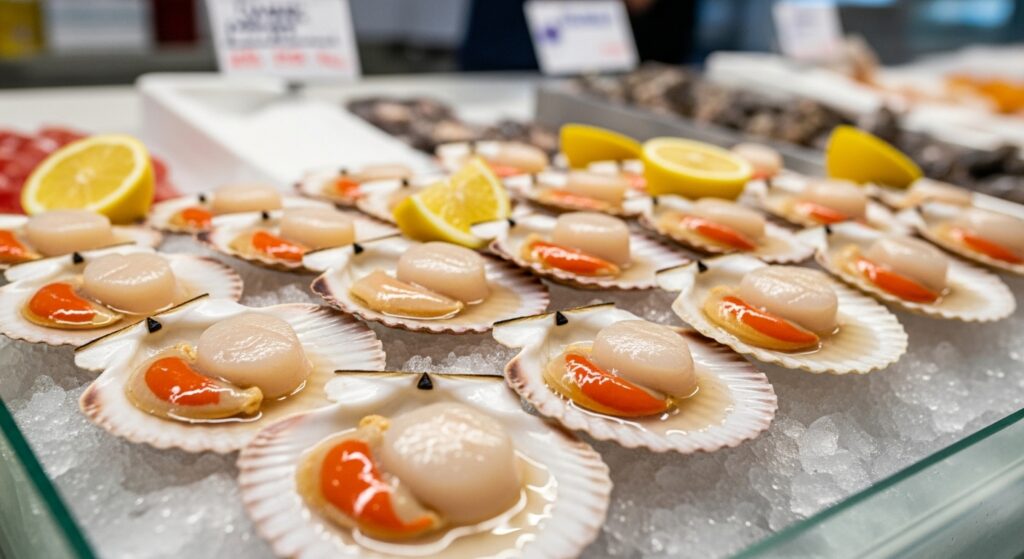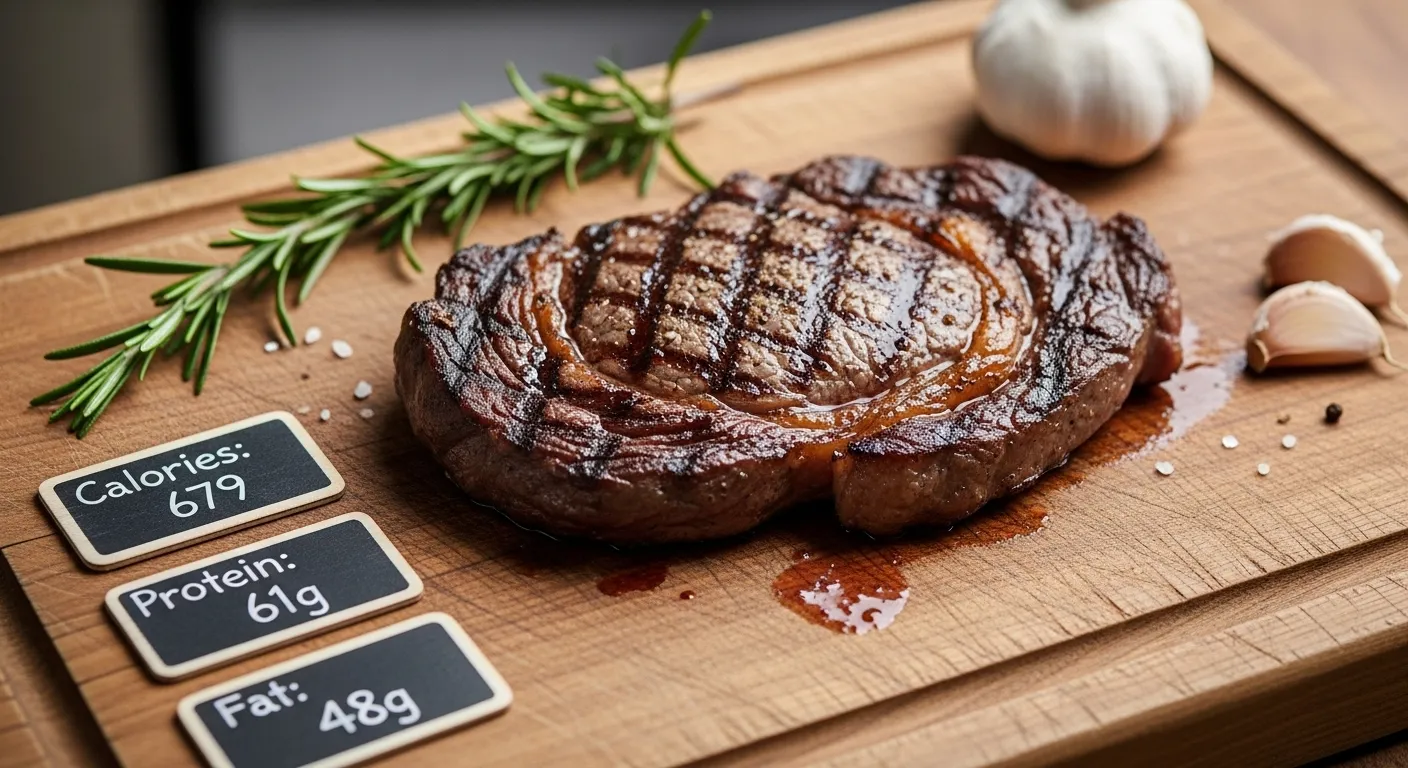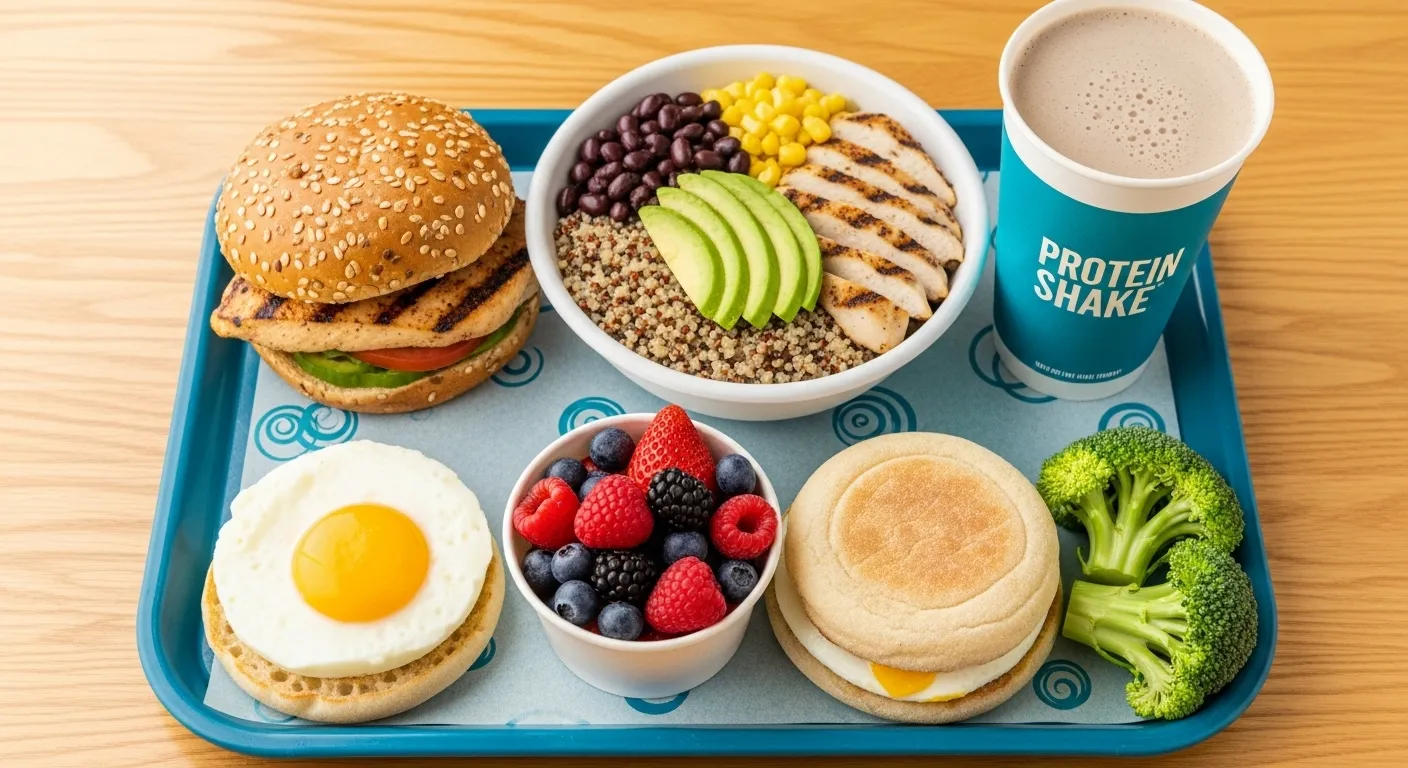Scallops Nutrition Benefits You Should Know

I’ve been working with seafood and meal plans for years, and scallops still surprise people. Whenever people ask me, “Are scallops good for you?” I tell them this is one of the cleanest proteins you can eat. When we are discussing Scallops Nutrition, we are not just promoting a “superfood.” We are discussing about actual, adequate food that supports daily energy, strength, and cardiac wellness.
Why I Often Recommend Scallops
The majority of peple just discuss about seafood like salmon and shrimp. Although it’s an intelligent choice, but scallops needs to be given slightly more attention. They are very high in protein, low in fat and also easily to digest.
Scallops are a great option for anyone who wants to keep building muscles without experiencing overeating and recover from exercise. They cook fast, stay tender, and keep your plate interesting. When I plan meals for people who are trimming calories or easing away from heavy meats, scallops almost always end up in the rotation.

Scallops Nutrition: The Basics
Here’s what you get from a 100-gram serving of cooked sea scallops:
| Nutrient | Amount (per 100 g) | Why It Matters |
|---|---|---|
| Calories | ≈ 90 | Helps control daily calorie intake |
| Protein | 17–20 g | Supports muscle repair and recovery |
| Fat | 0.8 g | Naturally low fat |
| Carbohydrates | 2 g | Barely any carbs |
| Omega-3 Fats | ≈ 250 mg | Good for heart and brain |
| Cholesterol | 35–40 mg | Moderate level |
| Iodine | High | Feeds thyroid function |
| Selenium | High | Strong antioxidant support |
| Vitamin B12 | 100 % DV + | Nerve and red-blood-cell health |
| Phosphorus | Good source | Bone strength and energy use |
That’s a lot of value for fewer than 100 calories. There is not really a drawback to clean, lightweight nutrition unless you have a seafood allergy.
Sea Scallops vs Bay Scallops
This is realy a most asking question that “what’s the difference between Sea scallops and Bay scallops“. Sea scallops are slightly bigger in size, little be solid and slightly more juicy. As compared to Sea scallops, bay scallops are slightly smaller in size, cook in just seconds and have very sweet taste.
Nutrition-wise, they are closer to each other:
- Sea scallops: usually edge out in protein per bite.
- Bay scallops: may carry a touch more natural sugar.
So, pick what fits your recipe or texture preference, both give you similar nutrition.
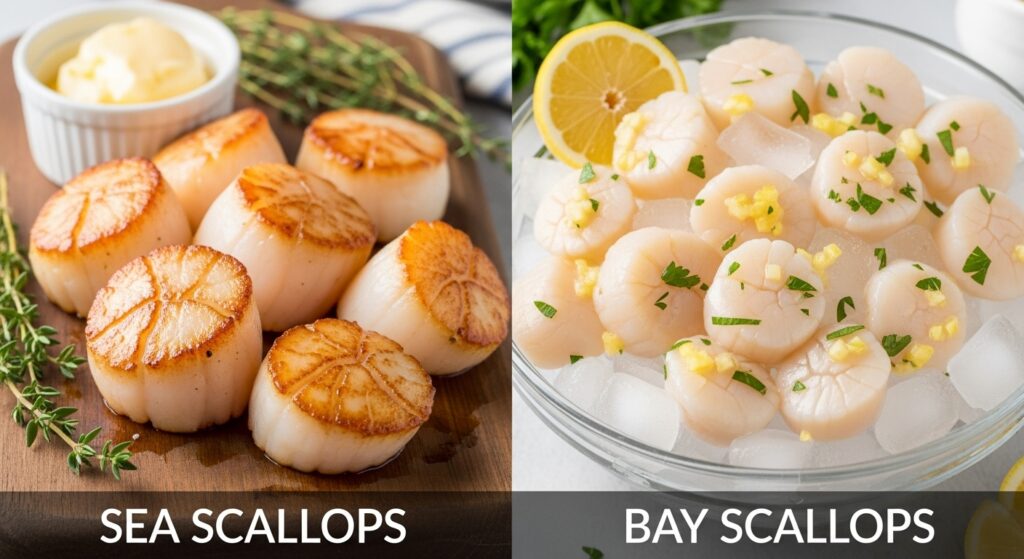
Protein and Weight Management
Scallops are a dream food for anyone watching calories but wanting real protein. Each 4 to 6 teaspoon portion of scallops contains 20 to 25 grams of protein and little or no fat. That’s why they’re so effective in high-protein or diet plans.
They make you feel stuffed without making you feel heavier. Scallops offer variation instead of raising up calories for those who grow bored of chicken or turkey meals.
Scallops Calories and Cholesterol
It always come to me in my DM, “How much cholesterol is in scallops?”. There is about 35 to 40 mg per 100 g of cholesterol present in scallops. That’s much lower than shrimp or beef. And the type of fat in scallops (mostly unsaturated) balances things out.
Most of my heart-health clients can eat scallops freely. However, callories-wise:
- Raw scallops: 75 to 90 calories / 100 g
- Grilled or lightly seared: 110 to 120 calories
Scallops Vitamins and Minerals
Scallops don’t just bring protein, but they also bring trace nutrients that most diets lack.
- Vitamin B12: keeps nerves and blood cells healthy.
- Selenium: protects your cells from oxidation.
- Magnesium and Zinc: help muscles recover.
- Iodine: keeps thyroid hormones balanced.
A small dosage of scallops can cover your daily need for B12 and selenium. Also, scallops rank among the safest seafood choices for mercury exposure, far below to tuna or swordfish.
Scallops for Weight Loss
If you’re cutting calories, scallops fit naturally. They’re filling but light, easy to digest and high in full satisfaction compared with their calorie load.
People who swap one or two meat meals a week for scallops often notice less bloating and smoother digestion. The food sits clean, so no heavy sauces required.
Pan-Seared and Grilled Scallops: Healthy or Not?
Scallops remain nutritious if cooked simply, by adding a small amount of avocado or olive oil over high flame with a rapid grilling. It’s that simple.
Pan-seared scallops: preserve their taste and amount of protein. Avoid sauces with a lot of butter.
Grilled scallops: are even lighter and go well with whole grains and vegetables.
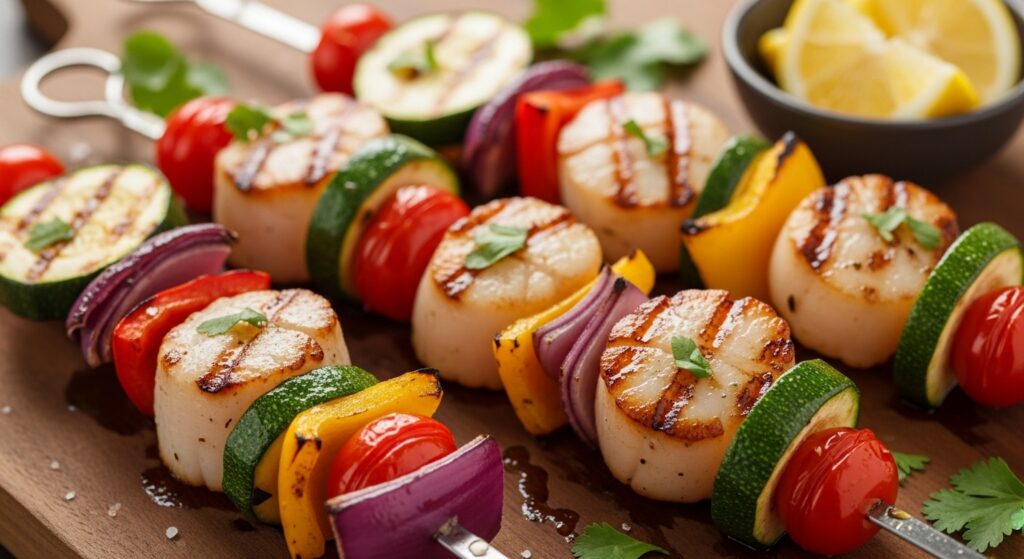
Scallops and Omega-3
Although they lack salmon’s powerful omega-3 energy, every little bit is helpful. These small dosages enhance your brain to function well, reduce inflammation and support your heart.
For clients who dislike oily seafood, I often suggest scallops because this is more gentle way to increase good fats.
Scallops for Heart Health
Scallops naturally bring together omega-3, magnesium, potassium, and taurine nutrients that calm blood pressure and support vessel health.
Replacing red meat with scallops even twice a week can make a measurable difference in lipid balance. The old fear about dietary cholesterol? Is outdated. For most people, food cholesterol doesn’t spike blood cholesterol the way we once thought.
Are There Any Health Risks?
A few, If you’re allergic to shellfish, avoid them altogether. Buy only from trusted seafood markets; contamination from poor waters can happen.
Look for sustainably caught or certified farmed scallops. They’re safer and better for the environment. Wild North Atlantic varieties are usually the cleanest.
Heavy-metal levels in scallops are very low, so nothing to worry about compared with large predatory fish.
Scallops in Different Diets
- Keto: excellent fit, pure protein and no carbs.
- Low-calorie: perfect main dish under 150 calories.
- Mediterranean: pairs beautifully with olive oil and herbs.
- Athletic or high-protein diets: easy digesting recovery meal.
Scallops vs Other Shellfish
| Seafood Type | Calories (100 g) | Protein (g) | Fat (g) | Cholesterol (mg) |
|---|---|---|---|---|
| Scallops | 90 | 17–20 | 0.8 | 35–40 |
| Shrimp | 99 | 20 | 0.3 | 180 |
| Mussels | 172 | 24 | 4.5 | 56 |
| Clams | 148 | 25 | 2 | 67 |
| Salmon | 208 | 20 | 13 | 55 |
Scallops come out leanest and easiest to digest. Among low-calorie seafood, they’re top-tier.
Cooking Tips from a Nutritionist
I’ve prepared scallops several times than I can remember. The procedure is easy: It must be quick and dry.
- Pat dry before cooking.
- Medium-high heat, 90 seconds per side.
- Add flavor with lemon, garlic and herbs not heavy sauces.
- Serve with veggies or a small portion of whole grains.
If you meal-prep, cook them the day you eat them, they don’t reheat well.
Sustainability and Quality
Scallops usually rate high for sustainability. Look for the MSC label or region info. Wild-caught scallops often taste cleaner; farmed ones are fine if raised in good waters.
Avoid those labeled “treated with STP” or “added phosphates.” That chemical bath adds water weight and steals flavor.
Scallops vs. Other Proteins: Let’s Be Honest
I’ve compared scallops to every protein under the sun, chicken, shrimp, salmon and tofu. If we’re being real, scallops sit in their own lane. You can eat a whole plate and still feel like moving after.
Here’s how they stack up nutritionally:
| Food | Calories (100g) | Protein (g) | Fat (g) | Carbs (g) | Cholesterol (mg) |
|---|---|---|---|---|---|
| Scallops | ~90 | 17–20 | <1 | 2 | 35–40 |
| Chicken Breast (Grilled) | 165 | 31 | 3.6 | 0 | 85 |
| Salmon (Baked) | 208 | 20 | 13 | 0 | 55 |
| Shrimp (Boiled) | 99 | 20 | 0.3 | 0 | 180 |
| Tofu (Firm) | 76 | 8 | 4 | 2 | 0 |
Scallops are that rare mix, high protein and barely any fat. When someone tells me they’re tired of eating chicken on a “clean diet,” scallops are what I recommend. They don’t have that heavy, dry bite chicken sometimes does. They just feel easier on your body.
Simple Meals That Actually Taste Good
I’m not a fan of overcomplicated recipes. You don’t need ten spices to make scallops taste right.
They already have that natural sweet-salty thing going.
| Meal Type | How I Make It | Why I Like It |
|---|---|---|
| Breakfast | A few scallops sautéed with spinach and one soft egg | Keeps hunger away till noon |
| Lunch | Tossed cold scallops in a lemony salad | Light but hits the protein goal |
| Dinner | Grilled scallops with quinoa or steamed broccoli | Easy clean dinner |
| Snack | Cold scallop ceviche with avocado | Refreshing and low-cal |
| Post-Workout | Scallops + rice + green beans | Fast digesting, no bloat |
You’ll notice there’s nothing fancy here. Most people ruin scallops by overthinking them. A hot pan, a little oil, salt, and lemon that’s it, seriously. Less is better.
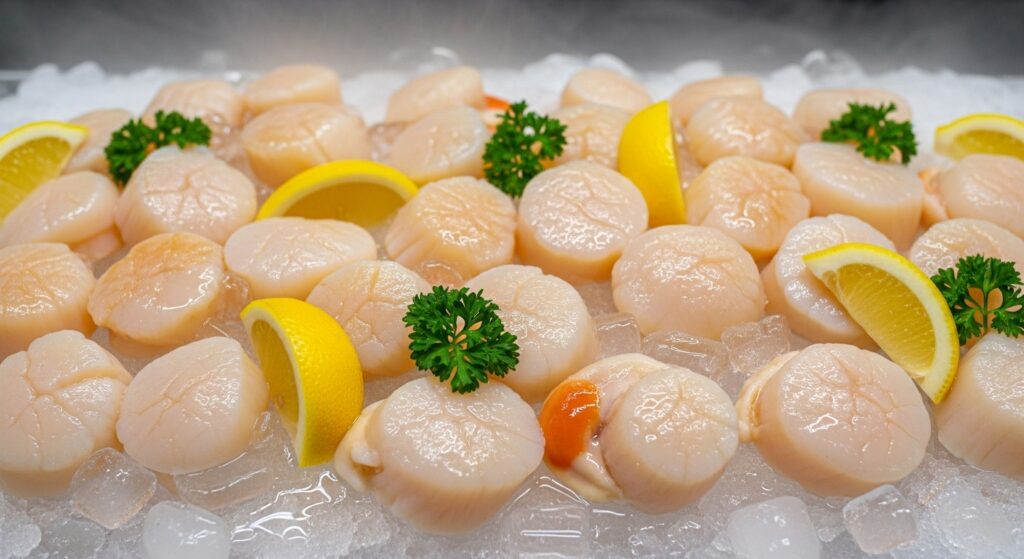
From My Notes: Cooking & Storage Tips That Matter
After cooking these things a hundred times, I’ve learned what not to do more than what to do.
| Step | Tip |
|---|---|
| Buying | Always dry-packed. If they look glossy or sit in liquid, skip them. |
| Thawing | Overnight in the fridge, never on the counter. |
| Cooking | 1½ minutes per side, maybe 2. Over that, they go rubbery. |
| Seasoning | Salt, pepper, garlic if you must. That’s plenty. |
| Storage | Eat within 48 hours. They lose flavor fast. |
FAQs
1. Are scallops healthy?
Yes. They’re lean, full of protein, and low in fat. You get nutrients like B12, magnesium, and omega-3s without extra calories.2. Can scallops help with weight loss?
They can. High protein keeps you full longer, so you end up eating less overall.3. Are scallops high in cholesterol?
A little, but not enough to worry about for most people. The healthy fats in scallops actually support heart health.4. Are scallops okay for keto?
Yep. Barely any carbs — around 2 grams per 100g — so they fit right in.5. Can I eat scallops every day?
You could, but variety’s better. Two or three times a week is ideal.
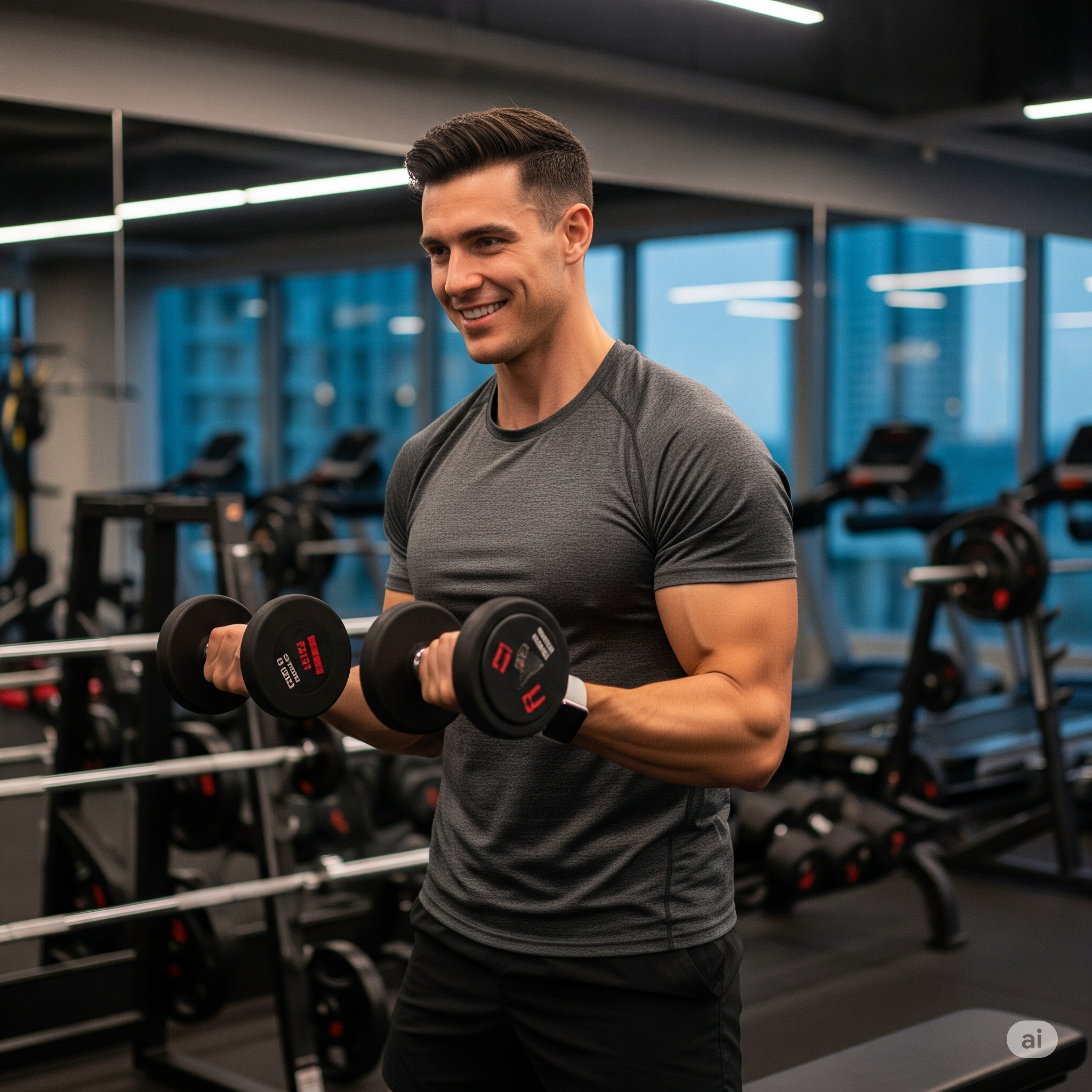
I’m Benjamin Clark, dedicated to elevating your athletic performance. Get targeted fitness plans, injury prevention techniques, sports psychology insights, and the latest in nutrition. Let’s train smarter.


